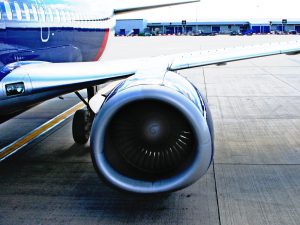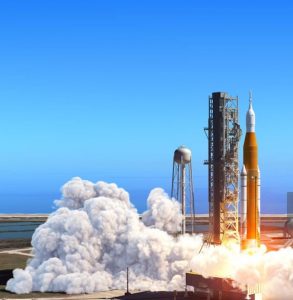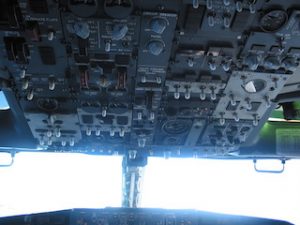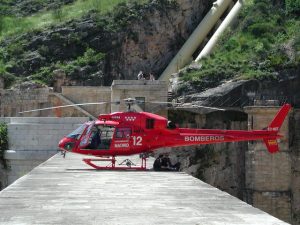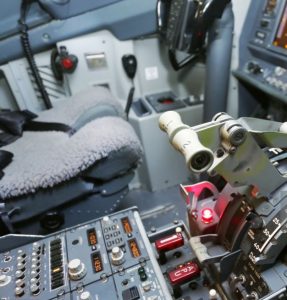10 Frequently Asked Questions About Astronautical Engineering
 Astronautical engineering is a branch of aerospace engineering that focuses on the design, development, and operation of spacecraft and systems that operate beyond Earth’s atmosphere. It encompasses everything from satellite technology to interplanetary exploration, making it one of the most exciting and rapidly evolving fields in engineering. With the increasing interest in space travel, satellite communications, and space exploration, more people are looking to understand this cutting-edge discipline. This in-depth article answers ten frequently asked questions about astronautical engineering and provides insights into the academic requirements, career opportunities, skills needed, and the future of space exploration.
Astronautical engineering is a branch of aerospace engineering that focuses on the design, development, and operation of spacecraft and systems that operate beyond Earth’s atmosphere. It encompasses everything from satellite technology to interplanetary exploration, making it one of the most exciting and rapidly evolving fields in engineering. With the increasing interest in space travel, satellite communications, and space exploration, more people are looking to understand this cutting-edge discipline. This in-depth article answers ten frequently asked questions about astronautical engineering and provides insights into the academic requirements, career opportunities, skills needed, and the future of space exploration.
1) What is astronautical engineering?
Astronautical engineering is a specialised discipline within aerospace engineering that deals with the design, development, testing, and operation of spacecraft and space systems. This field focuses on technologies that function in outer space, unlike aeronautical engineering, which deals with aircraft that operate within Earth’s atmosphere.
Astronautical engineers work on a wide range of space-related technologies, including satellites, space stations, space probes, and spacecraft used for manned and unmanned missions. Their work involves a combination of disciplines, such as materials science, propulsion systems, avionics, and fluid mechanics, all with the goal of enabling safe and efficient space exploration.
2) What are the educational requirements for astronautical engineering?
A career in astronautical engineering typically begins with obtaining a Bachelor’s degree in aerospace engineering or a related field, such as mechanical or electrical engineering. Many universities offer specialized programs that focus on astronautical engineering, with courses in orbital mechanics, space systems design, propulsion, and satellite communications.
For those looking to advance in the field, a Master’s or Ph.D. in astronautical engineering or space science can provide deeper knowledge and open doors to higher-level positions in research and development, space exploration, and academia. Additionally, some roles in astronautical engineering may require knowledge in other areas, such as computer science, physics, or mathematics.
3) What do astronautical engineers do on a daily basis?
The daily responsibilities of an astronautical engineer vary depending on their area of specialization and the projects they are involved in. However, common tasks include:
- Designing spacecraft components: Astronautical engineers work on developing various spacecraft parts, such as propulsion systems, communication equipment, navigation tools, and structural elements.
- Testing and simulation: Engineers perform simulations and run tests to ensure that spacecraft can withstand the harsh conditions of space, such as extreme temperatures, radiation, and microgravity.
- Mission planning and analysis: Astronautical engineers contribute to mission planning, including trajectory analysis, orbital mechanics, and spacecraft navigation to ensure that missions are successful.
- Collaborating with teams: Working with multidisciplinary teams, astronautical engineers collaborate with other engineers, scientists, and technicians to ensure that every aspect of a space mission runs smoothly.
4) What skills are required to succeed in astronautical engineering?
To succeed in astronautical engineering, individuals need a combination of technical, analytical, and soft skills. Some of the most important skills include:
- Problem-solving: Engineers must be able to tackle complex technical challenges related to spacecraft design, propulsion, and navigation.
- Mathematics and physics: A deep understanding of mathematics and physics is essential for calculating orbits, forces, and trajectories in space environments.
- Computer programming: Many spacecraft systems require software for control and communication, so proficiency in programming languages such as Python, C++, and MATLAB is valuable.
- Attention to detail: Astronautical engineers must pay close attention to details to ensure precision in spacecraft design and operation.
- Teamwork and communication: Since space missions involve large teams, engineers must work well with others and communicate their ideas clearly.
5) What are some common applications of astronautical engineering?
Astronautical engineering has numerous applications beyond just space exploration. Some of the key areas include:
- Satellite technology: Satellites are used for a variety of purposes, such as communication, weather monitoring, navigation, and Earth observation. Astronautical engineers play a critical role in designing and maintaining these systems.
- Space exploration: Engineers contribute to the design and operation of spacecraft for manned missions, such as the International Space Station, and unmanned missions, such as rovers on Mars and probes sent to other planets.
- Defence and military: Astronautical engineering is also applied in defence systems, including missile technology, space-based surveillance, and satellite reconnaissance.
- Commercial spaceflight: With the rise of companies like SpaceX, Blue Origin, and Virgin Galactic, astronautical engineers are increasingly involved in developing systems for commercial space travel.
6) How does astronautical engineering differ from aeronautical engineering?
Aeronautical engineering focuses on the design and development of aircraft that operate within Earth’s atmosphere, such as airplanes, helicopters, and drones. Aeronautical engineers deal with the challenges of atmospheric flight, including aerodynamics, propulsion, and structural integrity in conditions like air resistance and wind shear.
In contrast, astronautical engineering deals with the design and operation of vehicles and systems that function in outer space. Spacecraft face entirely different challenges, including microgravity, radiation, and the vacuum of space. Therefore, astronautical engineers must consider factors such as orbital mechanics, spacecraft propulsion, and thermal control in their designs.
While both fields fall under the broader category of aerospace engineering, they focus on different environments and technologies.
7) What are the career opportunities for astronautical engineers?
Astronautical engineers have a variety of career paths to choose from, depending on their interests and expertise. Some of the most common career opportunities include:
- Satellite design and operations: Engineers working in this area design satellites for communication, weather monitoring, and navigation. They also oversee the launch and operation of these satellites in space.
- Spacecraft propulsion systems: Engineers in this field develop the engines and propulsion systems that power spacecraft. They work on technologies such as rocket engines, ion thrusters, and nuclear propulsion systems.
- Space exploration missions: Engineers contribute to missions led by organisations like NASA and the European Space Agency. These roles may involve designing spacecraft for missions to the Moon, Mars, and other planets, as well as developing rovers and landers.
- Defence and security: Many astronautical engineers work on defense projects involving missile systems, space-based surveillance, and satellite reconnaissance.
- Commercial space travel: The rise of private space companies has created new job opportunities for engineers to work on spacecraft for commercial space tourism, satellite internet services, and space cargo missions.
8) How is the future of astronautical engineering evolving?
The future of astronautical engineering is rapidly evolving due to advancements in technology and increased interest in space exploration. Some of the key trends shaping the future include:
- Space exploration: With renewed interest in lunar missions and plans for Mars exploration, astronautical engineers will be at the forefront of designing spacecraft for deep-space missions and establishing habitats on other planets.
- Satellite constellations: Companies like SpaceX are deploying large constellations of low-earth orbit satellites to provide global internet coverage. Engineers are needed to develop the technology that powers these networks.
- Reusable rockets: The development of reusable launch vehicles, such as SpaceX’s Falcon 9, is revolutionizing space travel by making it more cost-effective. This trend will continue to drive innovation in propulsion and materials science.
- Commercial space tourism: As commercial spaceflight becomes more accessible, astronautical engineers will play a crucial role in designing safe and reliable systems for private passengers.
- Space mining: The concept of mining asteroids and other celestial bodies for resources is becoming a reality. Astronautical engineers are involved in developing the technology for these missions.
9) How do you get started in astronautical engineering?
To begin a career in astronautical engineering, you should follow these steps:
- Earn a relevant degree: Start with a Bachelor’s degree in aerospace engineering, astronautical engineering, or a related field such as mechanical engineering. Make sure your program is accredited by a recognized body like ABET.
- Gain practical experience: Internships, co-op programs, and research opportunities will help you gain hands-on experience and make you more competitive in the job market.
- Pursue advanced education: For more specialized roles, consider earning a Master’s or Ph.D. in astronautical engineering or space science.
- Develop key technical skills: Proficiency in CAD software, programming languages, and simulation tools is essential for success in this field.
- Network with industry professionals: Join professional organisations like AIAA to build a network of contacts and stay informed about job openings.
10) What are the biggest challenges in astronautical engineering?
Astronautical engineers face a range of challenges, from technical difficulties to environmental constraints. Some of the most significant challenges include:
- Harsh space environment: Engineers must design spacecraft that can withstand extreme temperatures, radiation, and the vacuum of space.
- Cost and complexity: Space missions are expensive and require meticulous planning and precision. Reducing costs while maintaining safety and efficiency is a constant challenge.
- Limited resources: Spacecraft must operate with limited fuel, energy, and materials, requiring innovative solutions to ensure long-term sustainability.
- Communication delays: For deep-space missions, communication with Earth can involve significant delays, which means spacecraft must be equipped with autonomous systems to handle critical tasks.
Conclusion
Astronautical engineering is a dynamic and exciting field that plays a crucial role in shaping the future of space exploration, satellite technology, and commercial spaceflight. By understanding the educational requirements, career opportunities, and challenges involved, you can begin a rewarding career in astronautical engineering and contribute to humanity’s continued exploration of the cosmos. Whether working on satellite systems, designing spacecraft, or planning interplanetary missions, astronautical engineers are at the cutting edge of innovation in the space industry.

